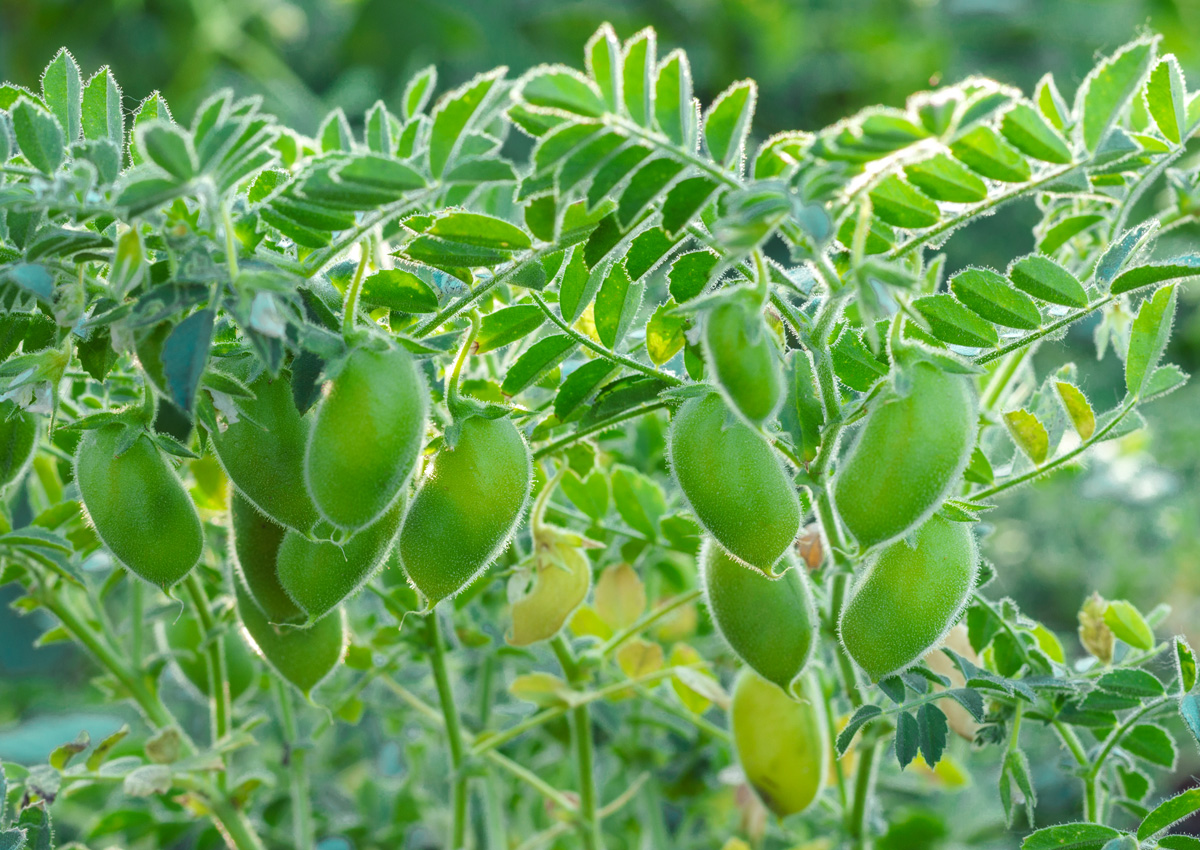
ICRISAT Researchers Identify Genes to Defend Chickpea Against Dry Root Rot
September 8, 2021| |
Researchers at the International Crops Research Institute for the Semi-Arid Tropics (ICRISAT) have identified a set of promising genes in chickpea that could play a key role in the plant's defense against dry root rot (DRR), a devastating fungal disease.
Led by Dr. Mamta Sharma, the team has now explained the mechanism of DRR at the molecular level. They found the involvement of endochitinase and PR-3-type chitinase (CHI III) genes in delaying the progression of DRR. DRR is caused by Rhizoctonia bataticola, a soil-borne fungus that kills plant tissues and uses the dead matter to sustain itself. Such pathogens are termed necrotrophic. While Fusarium wilt in chickpea has traditionally been the concern of plant health experts, DRR has emerged over the past decade as a major threat in the heart of India's chickpea-producing regions.
The team studied DRR susceptibility in two cultivars (BG 212 and JG 11) in high soil moisture and low temperature conditions, as well as in low soil moisture and high temperature conditions. The disease susceptibility was higher in the second set of conditions. They then studied the differential gene expression of several stress-responsive genes in chickpea and found the significant overexpression of genes encoding for the enzymes endochitinase and PR-3-type chitinase implicated their role in the plant's defense mechanism. "These genes are very active in the early stages of the disease, particularly under low soil moisture conditions, and have concluded that they contribute to delaying the progression," said Mr. Sharath Chandran, a Senior Research Fellow at ICRISAT and the study's first author.
For more details, read the new release on the ICRISAT Happenings Newsletter.
| |
You might also like:
- Chickpea to Get Nutrition Boost from Hardy and Weedy Wild Relatives
- Indian Experts Develop Nutritious Drought Tolerant Chickpea
- Global Team Sequences 429 Chickpea Lines from 45 Countries to Develop High-Yielding, Climate Resilient Crop
Biotech Updates is a weekly newsletter of ISAAA, a not-for-profit organization. It is distributed for free to over 22,000 subscribers worldwide to inform them about the key developments in biosciences, especially in biotechnology. Your support will help us in our mission to feed the world with knowledge. You can help by donating as little as $10.
-
See more articles:
-
News from Around the World
- FAO Launches Global Initiative on One Country One Priority Product
- 2nd Pre-COPMOP2021: Asian Regional Workshop on Current and Upcoming Items Under the CBD and its Protocols
- Research Team Develops Plant that Produces More Oil
- Experts Urge the Public to Support New Technologies to Address Agri Challenges and Climate Change
- ICRISAT Researchers Identify Genes to Defend Chickpea Against Dry Root Rot
- Report Sets Out How the UK Could Take Lead in Shaping Regulation for Genetic Technologies
-
Research Highlights
- Study Finds Bt Cotton Does Not Affect NTO Agro-ecosystem Relations
- Research Shows Rice Enzyme OsUBC26 Vital for Blast Fungus Resistance
-
Plant
- Chinese Consumers Prefer Gene-edited Foods to Transgenics
- Experts Develop the Smallest CRISPR-Cas System for Genome Editing
- Wageningen University and Research Gives Away CRISPR Licences for Free in Fight Against Hunger
-
Health
- UC San Diego Nanoengineers Develop Fridge-Free COVID-19 Vaccines Grown in Plants and Bacteria
-
Read the latest: - Biotech Updates (December 17, 2025)
- Gene Editing Supplement (December 17, 2025)
- Gene Drive Supplement (February 22, 2023)
-
Subscribe to BU: - Share
- Tweet

